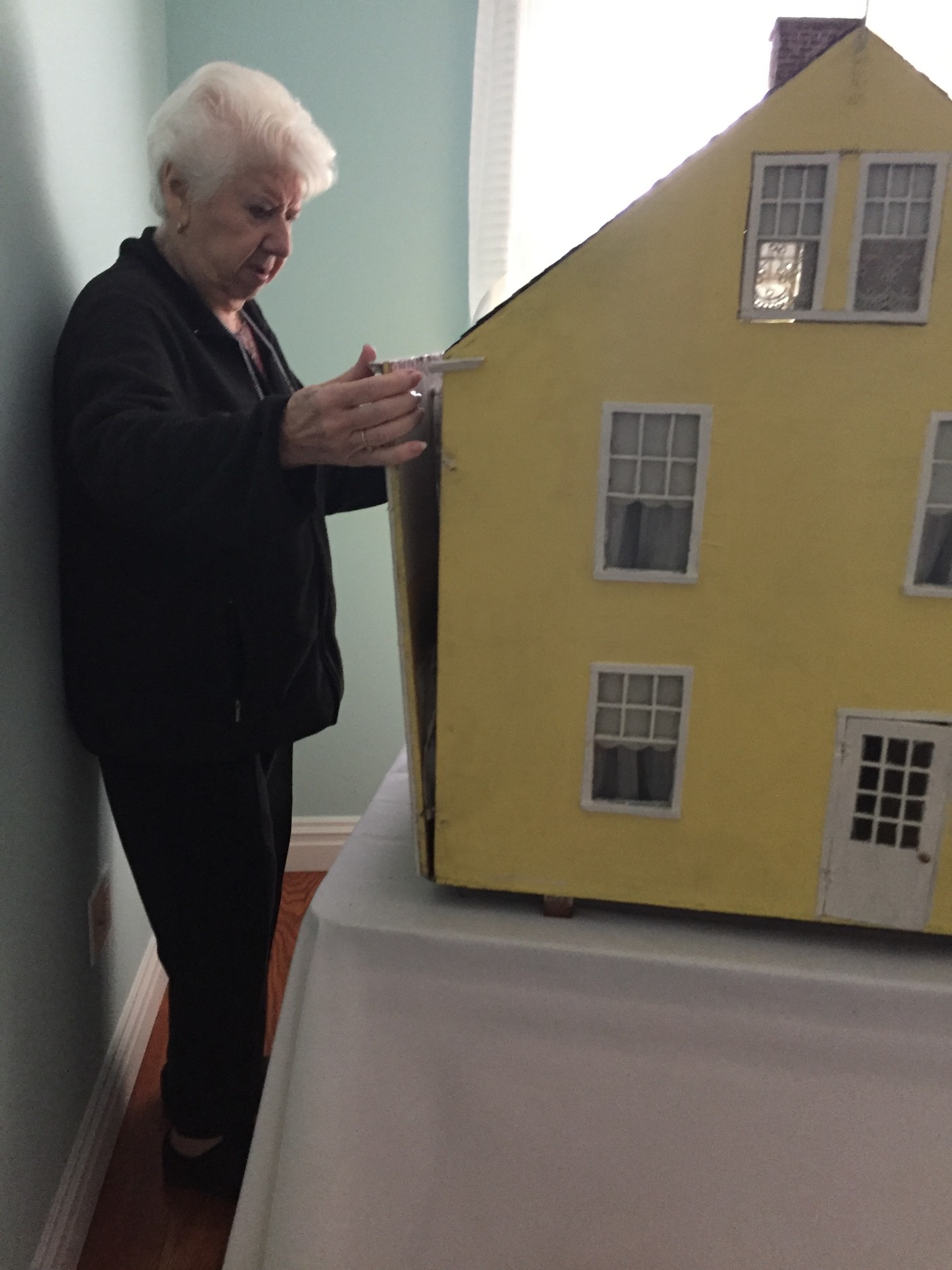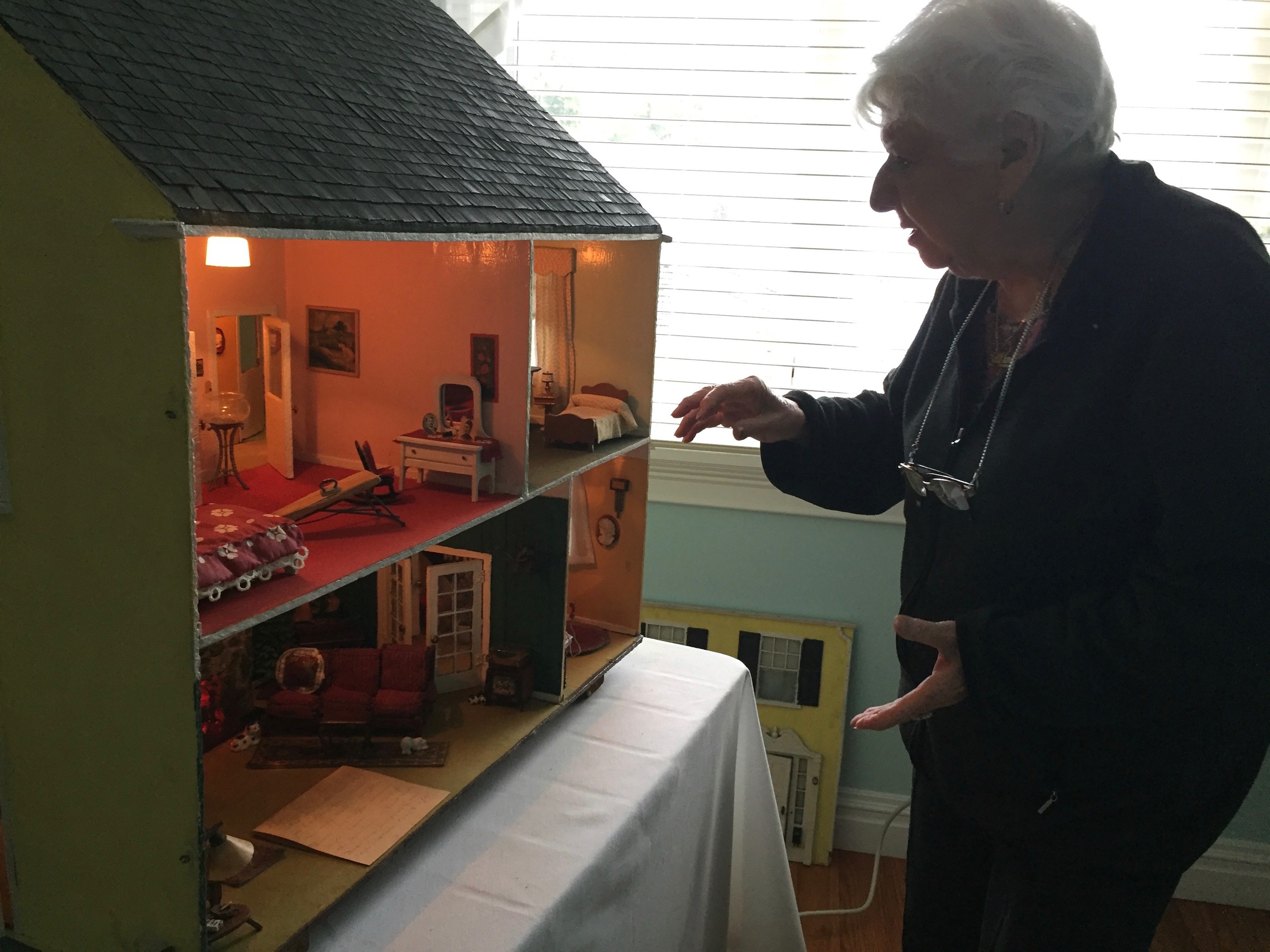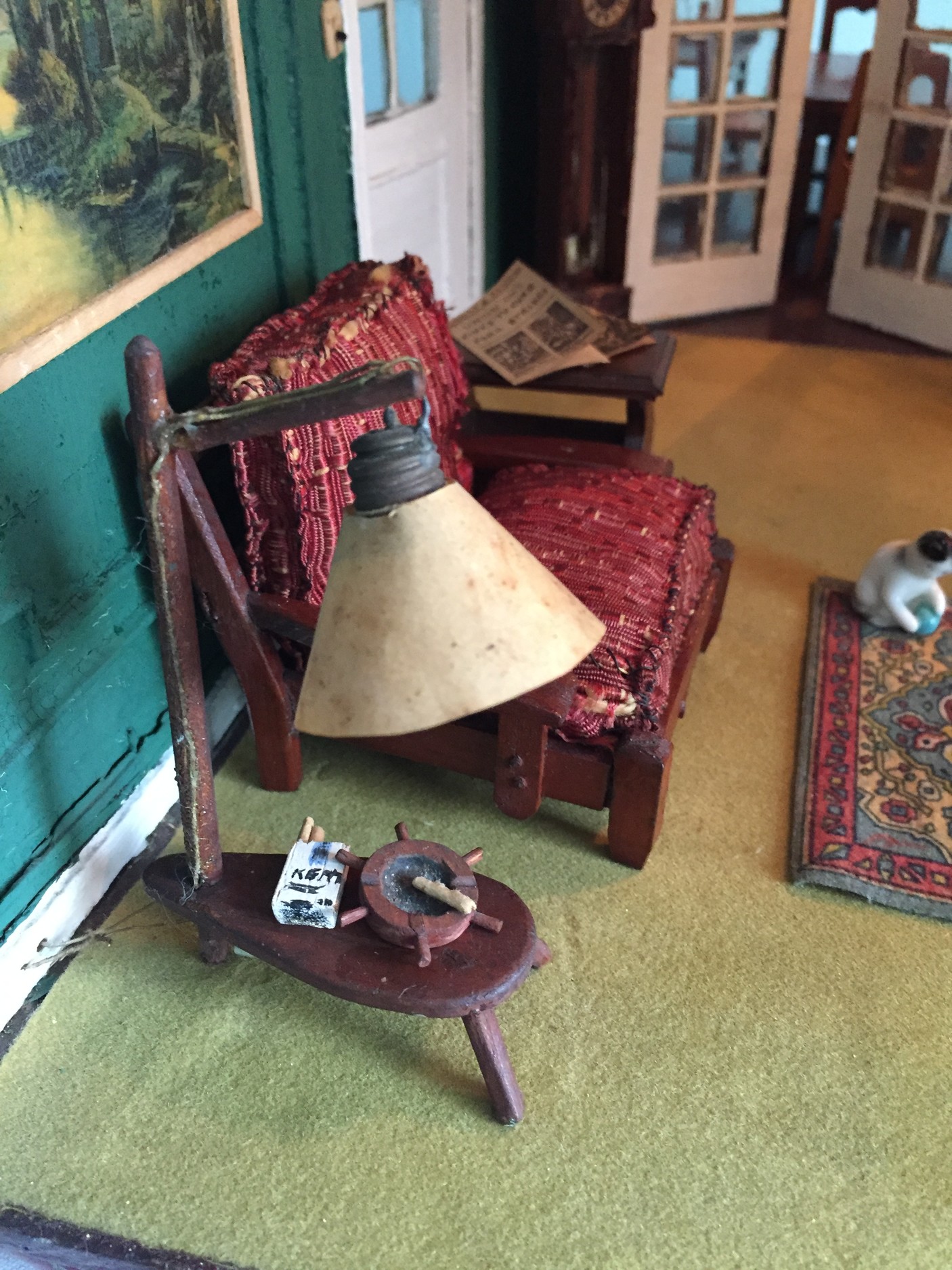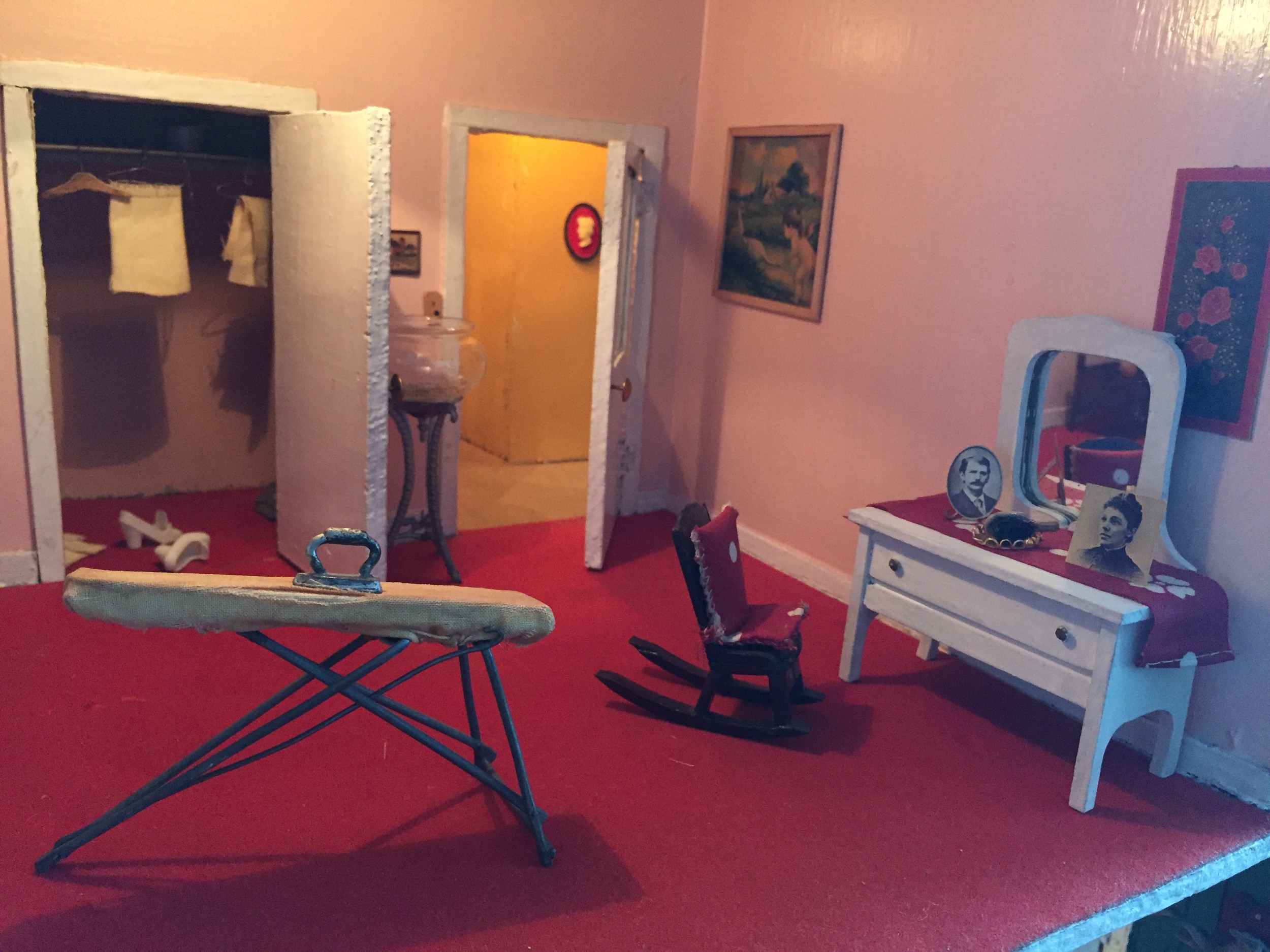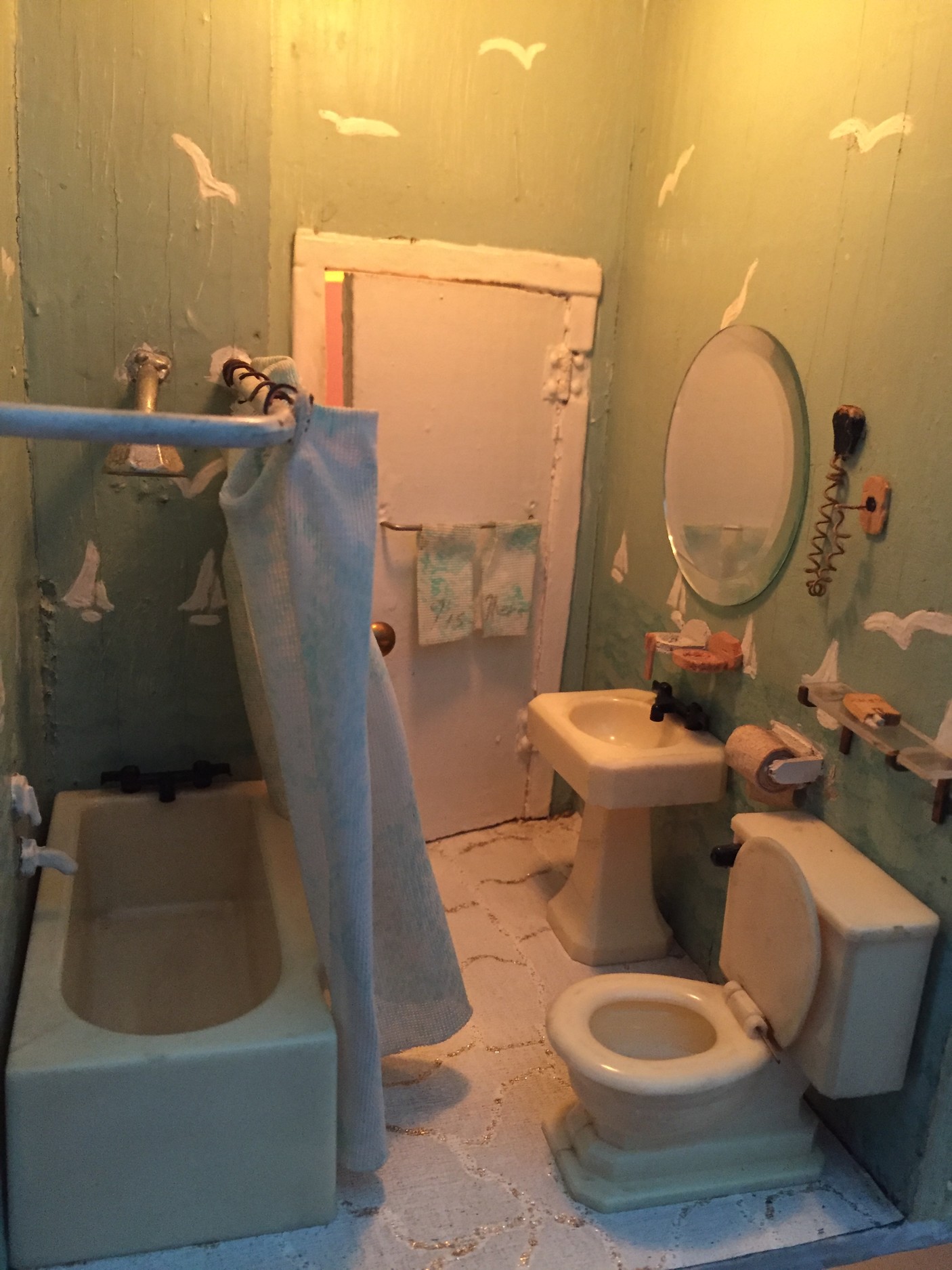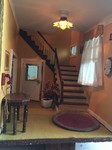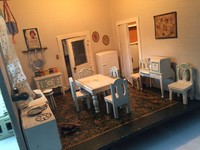Father crafts dollhouse fit for a human
Exclusive: Living Treasures, part one of a series
Mimi Simonetti’s father, Peter, bought plywood after receiving his first paycheck in the 1940s, following the Great Depression of the 1930s. That plywood would become her dollhouse, which she still has. It is a testament to a father’s love for his child.
As a young girl living in Brooklyn during the Depression, Simonetti — now 90 and living in Glen Head — yearned for that which any little girl would want —dolls, toys, clothes — but she never asked for any of it. She knew that if she did, her father, who wanted to give her the world, would become upset, she said. The family couldn’t afford to spend money on what many considered luxuries. So, Simonetti’s father would go home and try to make what the family needed instead.
Simonetti described her father as a handyman and a jack-of-all-trades. He worked as a house painter and an insurance agent, and performed all manner of odd jobs to make ends meets. “He was very talented in that way, that any time anybody needed something, he would just make it,” Simonetti said.
Simonetti was very close with her father. They were a real pair, even dancing the waltz and the foxtrot at his Knights of Columbus events, to the delight of the audiences.
When Simonetti was 10, her father began to build a dollhouse for his daughter, using a floor plan that he found in a magazine. With the plywood that he had purchased, he created a house to scale — 1 inch to 1 foot. Then, with only a screwdriver, penknife, hacksaw blade and hammer, he crafted almost every part of the house.
It stands just over 2.5 feet tall and 2.5 feet wide. The outside is painted a bright yellow, like her own Glen Head home. At first glance, it just looks like an old wooden dollhouse, but the closer you peer into it, the more the details become noticeable. The windows are glass, and the roof has wooden shingles made of old strawberry cartons. Her father painted them before laying them out individually. The house has gutters, a chimney, an antenna, and a front and side door. It has a doorbell too, a door knocker and a mailbox with a letter.
Inside, in the back of the house, the upstairs includes a bedroom, bathroom and playroom. The bathroom is ocean-themed, the walls hand-painted blue with little white birds and sailboats. It has a tub-shower, toilet and sink. There is a mirror on the wall, Mr. and Mrs. towels on the door, a toothbrush, roll of toilet paper and electric razor with a coiled cord plugged into the wall. A pack of smokes sits on a glass shelf above the toilet. Even the floor is hand-painted in a gold, sparkling design.
The playroom has animals painted on the walls — monkeys, an elephant, a seal and more. There are tiny children’s toys, like a train and a checkerboard game, and a desk with an ink blotter, topped with a tiny, handwritten letter.
On the lower level, the kitchen has hanging plants, pots and pans, a roll of paper towels, a clock and a spice shelf. There is even a dustpan with a miniature brush with hand-glued bristles.
Simonetti’s favorite room is the living room at the front of the house. The walls have raised moldings and are painted a deep forest green. There is a stone, wood-burning fireplace that glows red. Pets lounge on the carpeted floor. The room even has two sets of French doors, a record player and a grandfather clock. The room is cozy. It makes you want to snuggle up on the hand-sewn couch cushions.
Simonetti’s father left out no details. All the doors have hinges, and every picture has a frame. Every window has blinds, and the rooms all have light fixtures that work. Her father also included tiny light switches in each room. Each bedroom has a closet, some with clothes on both wire and wooden hangers. There are even pictures on the walls in the upstairs hallway.
The level of detail that Simonetti’s father put into the house translates into just how much he cared for his daughter. And it is so delicate that when it was finished, Simonetti wouldn’t let anyone else play with it.
Today, the dollhouse sits in its own room in the upstairs of Simonetti’s house on a white tablecloth. She doesn’t see it often, because climbing the stairs is not easy for her these days. But the dollhouse means a great deal to Simonetti, and on rare occasions she will show it to people, offering them a special treat.
Simonetti’s family members were artistic. She was encouraged to take art classes at the Brooklyn Academy of Music. Now she attends the Glen Cove Senior Center, where she takes watercolor classes. Her father also attended the center, and one of his sketches is hung in Executive Director Carol Waldman’s office.
Simonetti’s father died in 1994, but the dollhouse remains, a living reminder with details of his love for his daughter in each room.
See more pictures at: www.liherald.com/glencove.

 47.0°,
Overcast
47.0°,
Overcast 
